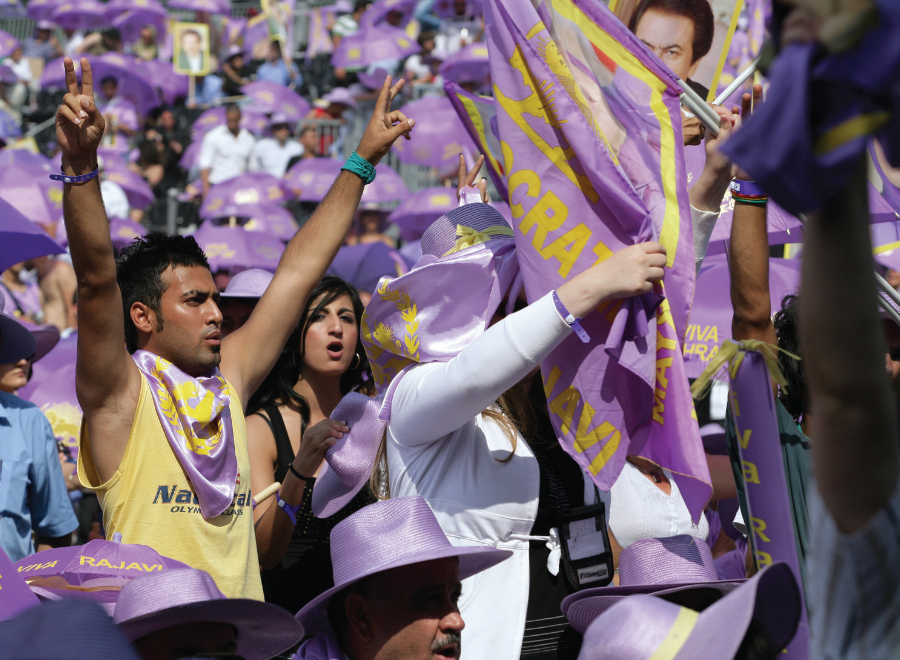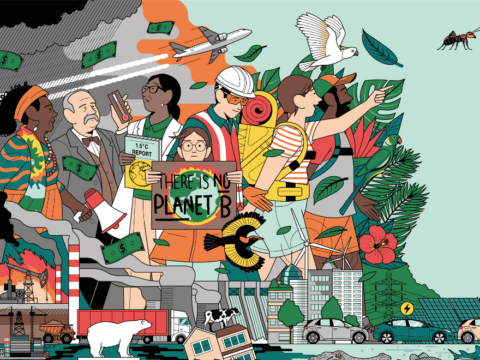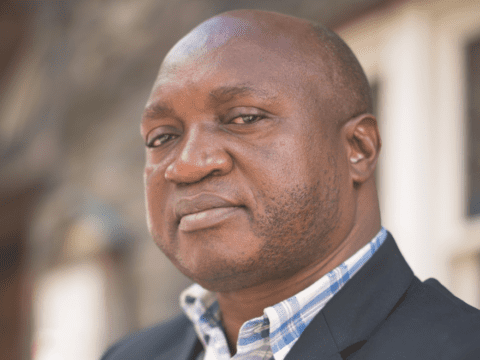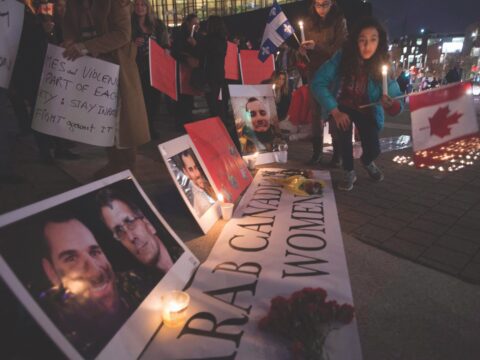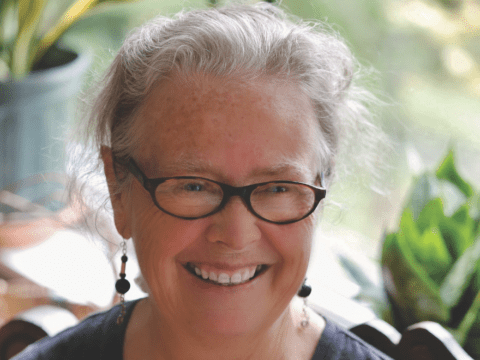Last June, Rev. Rob Oliphant and four other Liberal members of Parliament went to Paris for a huge rally in support of the National Council of Resistance of Iran (NCRI). It was the second year in a row that Oliphant, a United Church minister and the MP for the Don Valley West riding in Toronto, had been invited by the NCRI to its annual show of solidarity for democracy in Iran.
As far as the Canadian government was concerned, Oliphant and the thousands of other politicians and activists from around the world who attended the rally are consorting with terrorists.
The NCRI is an umbrella organization of Iranian resistance groups, the largest of which is the Mujahedeen-e-Khalq (MeK), also known as the People’s Mujahedeen Organization of Iran. The Iranian government regards the MeK, which sided with Iraq in the Iran-Iraq war and carried out many attacks inside Iran, as a terrorist organization, and until recently so did other governments in the West. In 1997, with the reformist Mohammad Khatami as the Iranian president, the U.S. State Department agreed to designate the MeK as a terrorist group in exchange for Iranian support for Middle East peace-building efforts. The United Kingdom labelled the MeK as terrorists in 2001; the European Union followed suit in 2002. In 2005, former prime minister Paul Martin’s Liberal government joined its closest allies in outlawing MeK.
Since then, however, the MeK has laid down its weapons and won a series of court battles in Europe. It has subsequently been delisted as a terrorist organization in both the European Union and the United Kingdom.
“I would not have gone in 2009 if the designation hadn’t been taken off in Europe,” Oliphant said last January. “[The Conservative] government’s understanding is not in line with Europe’s understanding of this group. I have written to both the prime minister and the minister of public safety to ask them to review the MeK’s status; they have only said that they have a timetable to do this, and the time has not come yet.”
So for the time being, the MeK is not permitted to organize on Canadian soil, and Canadian citizens can be arrested for making material contributions to the group. The case of the MeK raises broader questions: How does our country decide who is called a terrorist? And once a group has been branded with the label, what can be done to shed it?
On the Ministry of Public Safety’s website, there are 42 entries under the vague title of “Currently Listed Entities.” These are the groups that Canada has officially branded as terrorists. The vast majority are radical Islamist organizations, although the list includes Marxist-influenced Kurdish rebels in Turkey, paramilitary Basque separatists in Spain, the socialist Sri Lankan fighters the Tamil Tigers and the quasi-Buddhist Japanese cult Aum Shinrikyo, responsible for the 1995 sarin gas attack on the Tokyo subway system.
Government decisions on terrorism echo Canada’s Anti-terrorism Act, which became law in December 2001. The act was a complex piece of legislation that updated Canada’s definition of terrorism and created new powers for enforcement; it included amendments to the Criminal Code, the Canada Evidence Act, the National Defence Act and the Official Secrets Act.
After the 9-11 attacks on the United States, there was an urgent effort among all democracies to respond to the threat posed by Al Qaeda. The United Nations Security Council called on its member states to enact “full implementation of the relevant international anti-terrorist conventions.” Canada was not alone in quickly adopting stricter rules on who could be labelled a terrorist, who could be labelled a terrorist supporter, and what punishment could be meted out for both.
But there was also vocal opposition to the speed with which the bill passed through Parliament — barely two months from introduction to royal assent. The Canadian Civil Liberties Association argued that the legislation “received either inadequate or virtually no public or even parliamentary scrutiny.” The Canadian Council for Refugees worried about the legal precedents being set, arguing that the definition of a terrorist group was too broad and could incriminate “organizations that do not themselves commit terrorist actions and that do not necessarily support any such actions.”
These arguments continue today. The Anti-terrorism Act has been reviewed by committees in the House of Commons and the Senate; it has been tweaked in some areas, but the bill’s main provisions remain in effect. A terrorist group is designated as such by the cabinet on the recommendation of the minister of public safety. A group can be added not only for participating directly in a terrorist activity, but also for “knowingly acting on behalf of, at the direction of, or in collaboration with an entity described earlier in the provision.”
When a terrorist group is added to the list, the minister of public safety must review its status within two years, and then once every two years afterward. According to the Ministry of Public Safety’s website, every terrorist group on Canada’s list was last reviewed on Dec. 22, 2010. And the MeK remains on the list.
It’s a complex undertaking to get off that list. Generally, groups attempting to do so can either lobby politicians or launch a court challenge. So far, the MeK has seen little progress on either front in Canada, despite the efforts of Oliphant and others to get the organization delisted.
In the United States, efforts to convince the State Department to remove the MeK from the U.S. terrorist list have also met with little success, despite high-level public support from such people as former New York mayor Rudolph Guiliani, former secretary of homeland security Tom Ridge, and former attorney general Michael Mukasey. Last July, supporters won a Court of Appeals decision to force the State Department to reconsider the terrorism designation. By early spring, the outcome of that reconsideration was unknown.
Part of the challenge in getting delisted would seem to be overcoming the assumption that once a terrorist, always a terrorist. There is no question, for example, that the MeK used to engage in terrorist activities. In the 1970s, fighting against the U.S.-backed Shah of Iran, they explicitly targeted and killed American soldiers and civilians working in Iran, and took part in the hostage-taking at the American Embassy during the 1979 revolution. In the 1980s, they co-operated with Saddam Hussein’s military during the Iran-Iraq war and allegedly assisted in the brutal suppression of Kurdish and Shiite Iraqis in 1991. They have launched many attacks against the Iranian government, including a bombing that killed 70 senior governmental officials in 1981, simultaneous attacks on embassies in 13 different countries in 1992, and a bombing in Tehran in 1998 that killed three people.
However, the MeK renounced violence in 2001. When the Americans arrived in Iraq in 2003, the MeK openly disarmed, surrendering its tanks, armoured personnel carriers and heavy artillery pieces.
Today they claim to stand for a secular, democratic Iran. This warrants a fresh look at the group’s status, says Oliphant. “If a group used violence in the past, a generation ago, then we should be wary. But we need to recognize that times change— and groups change.”
There’s also a more difficult question at stake. “We need to have a really serious conversation about what we mean when we call someone a terrorist,” says Terry Glavin, a journalist and author who also travelled to Paris for the NCRI rally last June. “There are a lot of criticisms that can be made of the MeK, no doubt. But the point is that they’re democratic, and they’re the largest network of Iranian resistance on Earth.”
This point is echoed by Alan Borovoy, the legal counsel for the Canadian Civil Liberties Association. In a submission to the Senate committee reviewing the Anti-terrorism Act, Borovoy argued that the definition of terrorism in Canada “makes no distinction between pro- and anti-democratic violence. Nor does it adequately differentiate between the deliberate targeting of innocent civilians and what is directed against armed combatants.”
The label “terrorist” is serious — and one that is necessary in a world where ideology-driven groups crash loaded passenger jets into office towers. But how do we distinguish between different types of violence and goals? Is it simply a matter of whether civilians are the primary target, or is any attack against a sitting government considered terrorism?
Furthermore, how long must a group be non-violent before we stop calling them terrorists?
A decade after 9-11, these remain tough, unresolved questions. But they must be asked, and answers must be sought — not just for the sake of groups like the MeK, but for the sake of democracy itself.
***
This story first appeared in The United Church Observer’s May 2011 issue with the title “Stain of terror.”

